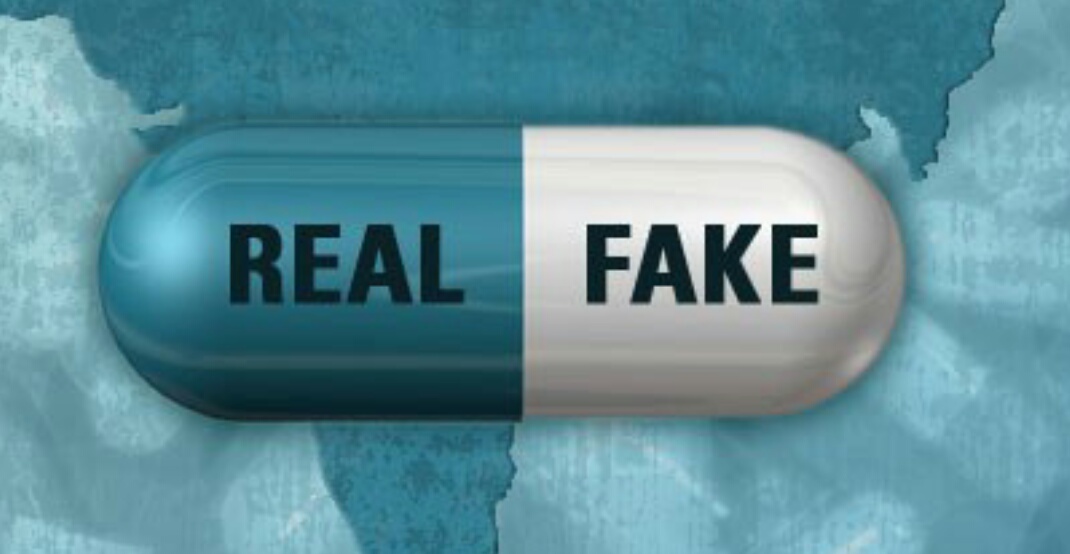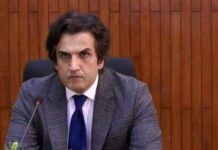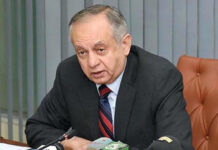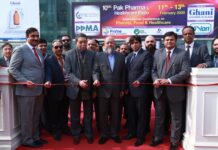Old furniture scrap and dried leaves scattered on the floor welcome whoever enters this worn-out Raj era building that houses an important department in the province – the Drug Control Administration. In the room inside, six men sit working clumsily, surrounded by heaps of cartons of either spurious or substandard drugs marked ‘court property’ in the office, which itself requires regulation to begin with.

Substandard, spurious, falsely labeled, falsified, and counterfeit (SSFFC) medical products commonly known as ‘fake medicines’ are either harmful for the user, or prove to be useless in curing the disease they are taken for. The minimum harm such SSFFC’s could do is confidence lost in medicine and healthcare system, leading people to succor at ‘faith healers’. And the maximum falls in the realm of death, for such medicine could indeed kill.
Ronald Noble, Interpol’s secretary-general in his opening remarks to an anti-counterfeiting conference in Africa, said: “Fake drugs are more deadly than terrorism. Forty years of terrorism, has killed 65,000 people globally, compared with 200,000 in one year alone in China from counterfeit medicines.”

Closer to home, Dr Abdul Ghafoor Shoro, senior family physician at the Agha Khan Hospital, narrates how owing to fake drugs TB, eradicated worldwide, is still rampant in Pakistan.
“With many unregistered and some registered companies manufacturing these, we see hundreds of untested by any authorised lab homeopathic, herbal, and alternative medicine,” said Dr Shoro.
Citing Tuberculosis (TB) as a case in point, Dr Shoro said, it had been eradicated worldwide, owing to substandard medicines, the scourge is on the rise. “The virus is becoming stronger day by day. We are observing increase in the number of drug resistant TB patients. Initially we saw Multiple Drug Resistant (MDR) patients, now XDR and XXDR cases are being reported,’’ said he.
The reason, according to Dr. Shoro, are the substandard drugs that not only fail to fight the disease, but in some ways intensify it too. Curable in six months otherwise, TB is becoming incurable in Pakistan.
One million deaths, WHO reports:
According to the World Health Organization (WHO), one million people die every year due to SSFFC that affect every region in the world. In 2010, former Pakistani Interior Minister Rehman Malik revealed to the National Assembly that the Pakistani pharmaceutical market contains 40 to 45 percent SSFFC drugs. Two years later, at least 120 heart patients at the Punjab Institute of Cardiology (PIC) died after they were allegedly given spurious heart medicine.
“Falsified medical products may either contain no active or the wrong active ingredient, or the wrong amount of the correct active ingredient,” says WHO, adding, “they are also found to commonly contain corn starch, potato starch or chalk.”
SSFFC can sometimes be toxic and even lethal due to wrong active ingredient or other toxic chemical. These are also often produced under poor hygiene conditions by unqualified workers.
According to WHO website, both generic and innovator medicines are falsified including very expensive products for cancer to very inexpensive painkillers found in illegal street markets, unregulated websites, pharmacies, clinics, and hospitals. It also states that anti malaria and antibiotics are amongst the most commonly reported SSFFC medical products along with medical products from all the main therapeutic categories including medicines, vaccines and in vitro diagnostics.

To highlight how inappropriate medicines can destroy someone’s health, Dr Shoro presented the example of one of his patients whose kidneys had failed owing to using spurious medicine. A so-called hakim had prescribed him Cardisan – an anti-inflammatory drug for sexual performance which if used without consultant’s advice, can damage bones, kidney, and can also affect liver.
The Pakistan Pharmacist Association acknowledges nearly 4,000 pharmacies registered in the country, but 100,000 illegitimate producers are selling pharma products.
The quacks and the rip-off:
A report by the Pakistan Medical Association (PMA) Anti Quackery Committee mentions existence of 80,000 quacks only in Karachi, whereas the number of doctors registered with the Pakistan Medical and Dental Council (PMDC) in the megapolis is 170,000. Who are these quacks claiming to be doctors and why have they been allowed to stay in business?
The most prescribed antibiotic among quacks is Ceftriaxone – given to almost every patient be it a child or an adult, for every disease from fever to pain in abdomen or chest. The unregistered companies provide it for Rs40 a gram to medical stores while in retail it is sold for Rs230 a gram, compared to the Rs200 per gram by registered companies which can be sold with only Rs40 margin in retail. The quack clinics have their own stores too, so if a quack sees an average of 50 patients a day, this one fake medicine alone earns him Rs9,500.
Asma Jehangir, a housewife, can relate to the matter. Upon receiving the same syrup prescription by her family physician to every member of her household for all kinds of diseases, Jehangir questioned the usefulness of the medicine – and it turned out it was more beneficial to the doctor than the patient.
This one-remedy-for-all syrup has either vitamin or calcium ingredients which might be good for health, but not for the patients pocketbook. Such syrup of a famous company is supplied to stores between Rs150 to Rs200 whereas the patients buy it anywhere between Rs500 to Rs800. The doctor gets 40 percent commission from the local companies.
Another method of local companies to increase the sale is to incentivise doctors with gifts, share in percentage, foreign trips etc. All the doctors need to do is prescribe the substandard drug.
Another common medicine is Augmentin made by Glaxosmithkline (GSK), and its manufacturer, Abbott, markets it for Rs130 with the pharmacist passing it on to the patient for Rs150, at around 15 percent margin. Medical stores The same formula made by Zafa National, Ceforal-3, is supplied at Rs50 a pack to pharmacists and retailed with Rs75 profit, at Rs125.
A medical store worker in a Karachi suburb, Shahnwaz Manzoor, says that his pharmacy takes products from the local companies as they supply on credit, while the multinationals want cash up-front.
Multinational companies do not get registered their expensive drugs meant for cancer and kidney ailments etc, for as it does not have a sizable market while the registration process is extremely cumbersome. These are imported under the guise of ‘personal use’ by vendors who then sell it for Rs100 to Rs500.
Another example of unregistered medicine sold in the market is Viagra which is prescribed worldwide by doctors for heart diseases and is also used for enhanced sexual drive. However, Pakistan’s government is not willing to register the drug – perhaps because it could promote sexual activity. Now the Pfizer’s product is smuggled from China and India, who along with other countries have the drug registered.
Illegitimate pharmaceutical vendors take advantage of SSFFC due to presence of a dozen local manufacturers who produce famous medicines with identical names, slightly-altered spellings, similar packaging etc.
Septran – a GSK product – is one such medicine which is sold under multiple names having substandard quality. The Germany based company Merck produces iron containing medicine Neurobion and B12; their Pakistani version by Merck Pakistan produced for export purposes is more efficient. Though the price of exported product is seven to eight times higher than its value in Pakistan, the quality is superior too.
So lucrative is this SSFFC business that even an American-Pakistani along with other local vendors is involved in selling Merck’s local product in the guise of export quality.
“One Pandol tablet my brother in-law brought from Dubai was instantly helpful in backache relief. Its local version though has to be taken in twos otherwise the pain stays”, said a consumer.
Weak regularization turning it into a menace:
Due to weak regularization, substandard, spurious, falsely labeled, falsified and counterfeit (SSFFC) medical products have become a menace for Pakistani pharmaceutical market.
To regulate the drug market, there are two main organisations – one federal, and the other provincial: the Drug Regulatory Authority of Pakistan (DRAP) and the Drug Control Administration (DCA) respectively.
Post the 18th Amendment, the Drug Control Administration oversees the supply chain from stocks to medical stores. Its drug inspectors, as the procedure goes, should take samples from retailers and on-pass to the Sindh Drug Testing Laboratory (SDTL) for authenticity-check, and should take action, if so proposed.
Located in a portion of Police Surgeon’s Office, the SDTL doesn’t have an office to itself till now. To cap it, the lab facility is limited to testing oral dosage, and injectable or sterile medicines cannot even be tested, when about half of pharmaceutical market comprises of injectable or sterile medicines.
Pakistani pharmaceutical market is also flooded by homeopathic or herbal medicines. Though, in May 2014, the Drug Regulatory Authority made laws and registered more than 150 alternative, herbal medicine and health products, no laboratory in the entire country exists to check the content. In public perception, herbal and homeopathic remedies contain no side-effects and can be bought and used off the counter.

Unclear and mismanaged officials of different institutions provide ample opportunity to manipulators in the pharmaceutical market. In Sindh, the District Health Officers (DHO) give license to medical stores while the drug inspectors examine the drugs. Both of them lack coordination.
The DHOs do not take report from the DCA before issuing licenses to suppliers, and once the license is issued, medical stores do not bother to get their products checked from drug inspector. This explains mushroom growth of the unregistered stores where even the mandatory air conditioning too is not available, resulting in decreased drug efficiency.
A matter of trust:
On condition of anonymity, an officer said, now when DCA gets information about presence of fake drugs they avoid seizing the medicines as they don’t have enough space to store it.
The Pakistan Pharmaceutical Association (PPA) president, Qalb-e-Hassan Rizvi has a valid suggestion: the government should provide warehousing space where the drug inspectors can submit the court property and get rid of the liability. Once record keeping is not an issue, inspectors would be more active in seizing SSFFC medicines.

Then the drug inspectors are provided neither conveyance nor security to raid a store even on a tip-off, so for the hapless officers it’s not easy to step out of the comfort zone. The DCA have only 6 drug inspectors in Karachi, all waiting for their promotions. Drug Inspector Abdul Sattar Somroo joined service 30 years ago, and has not been promoted even once since. Other inspectors face similar circumstances, which explains the lack of enthusiasm amongst officers.
A drug inspector likely to be promoted intends to seek retirement on his elevation. According to him, higher post brings greater responsibility and liabilities outweigh advantages. “Not unlike my predecessors, I know I would have no powers to deal with difficult situations. We inspectors are blamed by everyone for everything that goes wrong in pharmaceutical industry without realising our lack of empowerment,” he said.
The DCA also has six key posts vacant. Currently it does not have a Chief Drug Inspector or a director for provincial laboratory, and three regional drug inspectors for Karachi, Larkana, and Sukkur are waiting to be administered by a senior. It has also five vacant posts in grade 18 and 14 in grade 17.
The coordination between DRAP and DCA also seems missing. DRAP issues operational license, import/export license, and registers the price of any drug without consulting or informing DCA.
Fake Abbott and Indus companies can be found in Khyber Agency near Torkham Border. Another company that produces SSFFC medicines can be found in Mardan. Gul Zaman, a medicine exporter to Afghanistan, says that the SSFFC destroyed Afghan market for Pakistani medicines. Now Afghans don’t trust Pakistani brands and have started importing medicines from elsewhere – the UAE, India and Russia.
Panadol CF and Reltus C&F tablets are being smuggled to Iran as it is used for crystal methamphetamine (crystal meth). One packet containing 100 tablets that costs Rs150 is sold in Iran for Rs2,200. Another medicine, Xanax is being smuggled to Saudi Arabia.

Government thus loses millions in potential revenue; Qalb-e-Hassan Rizvi suggests doctors to give duplicate prescriptions, which will make it easier for shopkeeper to maintain his record, and for government to keep a check on counterfeit products and increase its revenue. It is not difficult either; pharmaceutical companies provide the prescription pads and doctors can demand pads which contain carbon paper. This practice can be initiated in government hospitals and eventually the duplicate prescriptions will help the market.
The WHO guidelines suggest that falsified products are almost identical to the genuine stuff, making it hard to identify SSFFC. So how to differentiate? Examine the packaging for condition, spelling mistakes or grammatical errors, check the manufacturing and expiry dates and ensure details on the outer side match the ones on the inner packaging. And it can also be ensured by checking the medicine itself, whether it looks correct, is not discolored, degraded, or has an unusual smell. The guidelines also suggest discussing with pharmacist or doctor as soon as one suspects that the drug is not ineffective or spawns an adverse reaction.
Prevalence of fake drugs overstated:
The business of SSFFC medicines can be halted with strict regulation. SSFFC manufacturers order packaging material identical to legitimate products in large quantities; if suppliers keep a record of their deals, the government officials can easily catch the fraud.
“People should not buy medicine on their own. One must only take stuff prescribed by a doctor and insist on a proper receipt,” Dr. Qaiser Sajjad, Central Treasurer of Pakistan Medical Association recommends, adding, “The chemist would not sell something that can be traced back to him. For its part, the government should introduce hallmark on medical products which should only be printed at official institutions.”

“We buy medicine only from registered companies who also give advantage of return if any product is going to expire within six months. And we avoid buying from the wholesale market because there we don’t know if the product is real or not,’’ said Noman Khan at Malik Medical Store near JPMC. He suggested, people should buy medicines from stores situated on prominent places.
Meanwhile, Mohammad Aslam, CEO, Drug Regulation Authority of Pakistan (DRAP) said that he doesn’t think that the ratio of supply of spurious or fake drugs in Pakistan is as huge as it is claimed.
“Our research for the year 2016, after examining 73,000 drugs picked up from various areas, puts the ratio of substandard substandard medicine at 2% while another 0.3% were fake drugs. If there is a discrepancy, as there always is some in statistical data, it must be minor”, he said.
To him, the headline news that substandard or fake drugs were about 50% in Pakistan was overstating. “We confronted Rehman Malik, the then interior minister, for quoting this bizarre figure. He also confessed that he made a mistake by giving an incredible figure,” said he.
“The fake and spurious drugs may be found in small pockets around the country. However, it’s ratio is not as large as it is said to be. Since quacks are more involved in it, so we can control [prevalence of] fake drugs by reducing their number”, said he.
To him, the news was politically motivated, to dent our image and hurt our pharma exports to 31 countries. Though he didn’t name India specifically, the hint was clear. To Aslam, Pakistan’s arch-enemy was behind this scandal.























